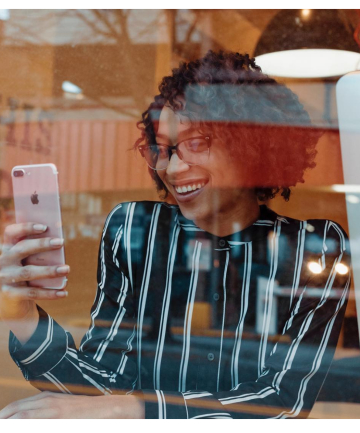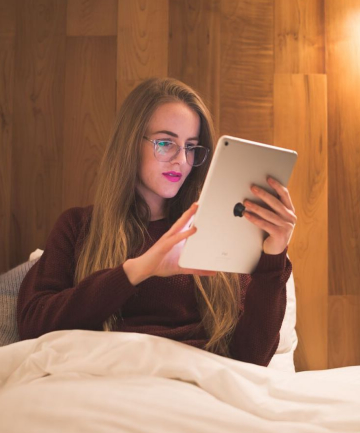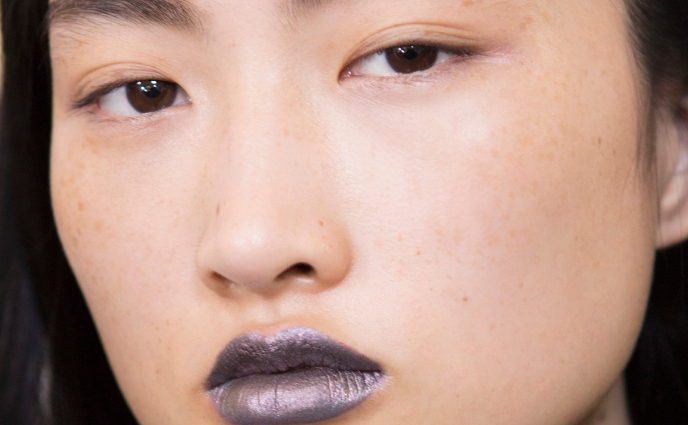We spend a lot of money (and time) protecting ourselves from the sun's damaging UV rays. From sunscreen to sun-protective clothing, we're well aware by now of how important daily protection is, even when it's cloudy out. But did you know there are harmful rays lurking in your home or office that can be just as damaging as UV rays? We're talking about blue light, and you're exposed to it every time you use your smartphone, laptop or television. Before delving into why you should be concerned about exposure to blue light, let's find out exactly what it is.
Image via @baxterblue_
Cover image via @baxterblue_
This article originally appeared on TheFashionSpot.com
Image via @baxterblue_
Cover image via @baxterblue_
This article originally appeared on TheFashionSpot.com
"Blue light is emitted from all handheld electronic devices as well as desktop and laptop computers and televisions," says leading holistic eye physician Dr. Marc Grossman. "It's the shortest wavelength light in the visible spectrum and causes significant damage to many parts of the eye, seriously impacting present and future vision capacity. Damage from blue light from smartphones is particularly important because smartphones are often used in dim light and are used close to the eyes. Unlike ordinary computer vision fatigue, damage from blue light is serious, cumulative and irreversible."
RealSelf contributor Dr. Joel Schlessinger adds that the sun also emits a big chunk of the blue light we're exposed to. That's right, the sun can do damage beyond skin cancer and wrinkles and with our ever-increasing reliance on technology, blue light exposure is only increasing.
Image via @healthyoffice
RealSelf contributor Dr. Joel Schlessinger adds that the sun also emits a big chunk of the blue light we're exposed to. That's right, the sun can do damage beyond skin cancer and wrinkles and with our ever-increasing reliance on technology, blue light exposure is only increasing.
Image via @healthyoffice
"Blue light exposure is cumulative and is one of the major risk factors contributing to frequency and severity of macular degeneration, the nation's leading cause of severe vision loss and legal blindness in adults," explains ophthalmologist Dr. Alan Mendelsohn. "More commonly than macular degeneration, blue light is the instigator of digital eye strain, which is characterized by eye fatigue, blurred vision, red and/or dry eyes, eye discomfort and decreased productivity. Sometimes headaches can also be present."
Schlessinger also notes that studies have found blue light to affect circadian rhythm, which can affect how well you're sleeping. "Sleep deprivation can cause premature aging, which is never a good thing, but it can also affect eyes because it's one of the types of light that human eyes are sensitive to. Blue light has some of the highest energy wavelengths and the shortest lengths, which causes flickering. This can cause eye strain, headaches and fatigue since our eyes don't come with a built-in blue light filter."
Image via @baxterblue_
Schlessinger also notes that studies have found blue light to affect circadian rhythm, which can affect how well you're sleeping. "Sleep deprivation can cause premature aging, which is never a good thing, but it can also affect eyes because it's one of the types of light that human eyes are sensitive to. Blue light has some of the highest energy wavelengths and the shortest lengths, which causes flickering. This can cause eye strain, headaches and fatigue since our eyes don't come with a built-in blue light filter."
Image via @baxterblue_
Blue light is especially problematic for children. "Anyone under the age of 9 is particularly vulnerable to eye damage from blue light emitted by computers, smartphones and other handheld devices," says Grossman. "Young children's eyes have not fully developed the protective pigment to help filter harmful blue light. Babies have little, if any, melanin pigment in their eyes, which is essential for filtering out blue light."
Most parents will tell you smart devices are imperative for keeping their kids entertained, but it's clearly important that they restrict the use of handheld devices in young children and, at the very least, Grossman advises to make sure your children consume plenty of fresh fruits and vegetables with plenty of important carotenoids to help protect their eyes from blue light damage.
Image via @baxterblue_
Most parents will tell you smart devices are imperative for keeping their kids entertained, but it's clearly important that they restrict the use of handheld devices in young children and, at the very least, Grossman advises to make sure your children consume plenty of fresh fruits and vegetables with plenty of important carotenoids to help protect their eyes from blue light damage.
Image via @baxterblue_
Wear UV-resistant sunglasses when you're outside. "Favor sunglasses that are amber-tinted, reducing blue light rather than gray, green or bluish lenses," says Grossman. He also suggests investing in glare screens for your desktop, laptop and handheld displays that reduce blue light, limiting exposure to LED/fluorescent-based light and instead look for lighting options that simulate daylight with broad spectrum color and following the 20-20-20 rule. "Every 20 minutes that you use the computer or any electronic device, look at least 20 feet away for at least 20 seconds. This gives the tiny muscles in your eye a chance to relax."
He also recommends blue light glasses like Baxter Blue or Healthy Office. "Blue light filter glasses are the best way to mitigate the harmful and uncomfortable symptoms of blue light," says Grossman. "These lenses are designed to effectively filter blue light without changing the clarity of the lens. You can also add anti-glare to the computer glasses for optimal comfort on the computer."
Baxter Blue's lenses have been specifically developed to filter out the short wave harmful blue light without changing the color perception of a digital screen. The blue light filtering component is part of the actual lens, not a coating on the outside and they also have an anti-reflective coating to reduce the glare of digital screens to enhance the viewing experience as well as offering 100 percent UV protection. Similarly, Healthy Office's versions are designed to block harsh blue light, reduce eye strain and improve sleep.
Image via @healthyoffice
He also recommends blue light glasses like Baxter Blue or Healthy Office. "Blue light filter glasses are the best way to mitigate the harmful and uncomfortable symptoms of blue light," says Grossman. "These lenses are designed to effectively filter blue light without changing the clarity of the lens. You can also add anti-glare to the computer glasses for optimal comfort on the computer."
Baxter Blue's lenses have been specifically developed to filter out the short wave harmful blue light without changing the color perception of a digital screen. The blue light filtering component is part of the actual lens, not a coating on the outside and they also have an anti-reflective coating to reduce the glare of digital screens to enhance the viewing experience as well as offering 100 percent UV protection. Similarly, Healthy Office's versions are designed to block harsh blue light, reduce eye strain and improve sleep.
Image via @healthyoffice









